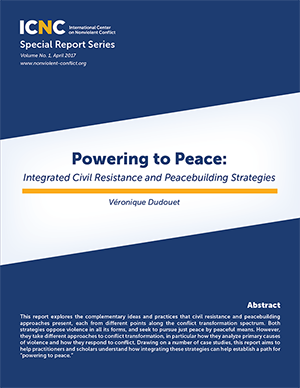ICNC Special Report Series
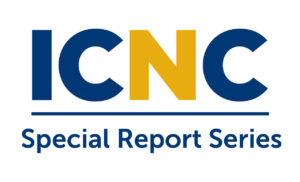 Launched in 2017, ICNC’s Special Report Series aims to bridge the gap between academic, policy and other practitioner communities. ICNC Special Reports draw on cutting-edge research to cover topics pertinent to the ongoing policy discussions and practitioners’ debates around issues relevant to civil resistance movements, grassroots campaigns and nonviolent struggles taking place around the world.
Launched in 2017, ICNC’s Special Report Series aims to bridge the gap between academic, policy and other practitioner communities. ICNC Special Reports draw on cutting-edge research to cover topics pertinent to the ongoing policy discussions and practitioners’ debates around issues relevant to civil resistance movements, grassroots campaigns and nonviolent struggles taking place around the world.
Published Reports
Dollars and Dissent: Donor Support for Grassroots Organizing and Nonviolent Movements
By: Benjamin Naimark-Rowse
Date of Publication: September 2022
Free Download
Around the world, more people than ever before are using nonviolent collective action to secure rights, achieve justice, and build democracy. This strategy has been twice as effective at attaining these goals than has violent action. Yet despite this, from 2011 to 2018, public charities and private foundations gave only three percent of their total human rights funding to support nonviolent collective action.
Drawing on in-depth interviews and surveys with donors and grantees, this report outlines trends in donor support and details how donors’ values, organizational structures, and perceptions of risk affect their support for the work of grassroots organizers and nonviolent social movements. Furthermore, this report assists donors seeking to deepen their understanding of whether, when, where, and how to provide this support.
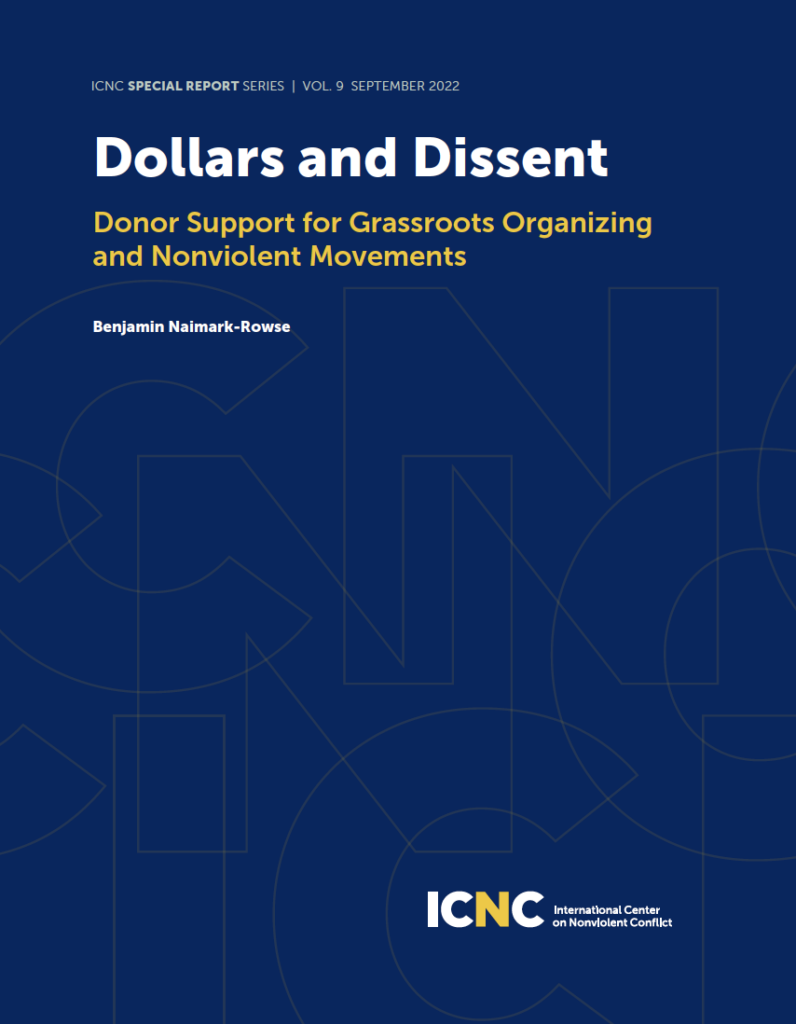
The Pashtun Protection Movement (PTM) in Pakistan
By: Qamar Jafri
Date of Publication: September 2021
Free Download: English | Urdu
Purchase a Print Copy
Purchase an e-book (Nook | Kindle)
The Pashtun Protection Movement (PTM) is a youth-led nonviolent resistance campaign for human rights for the Pashtun people in northwestern Pakistan. This movement is reminiscent of Pashtun historical icon Bacha Khan’s organizing nonviolent action for justice in Pakistan’s past. How are these young Pashtuns differentiating themselves from violent religious extremists (e.g. Taliban Movement) and resisting government repression and mistreatment through nonviolent resistance activities? How do they develop and use nonviolent strategies and tactics in their protests and actions? How do they engage supporters and opponents of the movement? How do they manage funding and media coverage of their activities? The study seeks to answer these and other questions questions via relevant field research and data collection.
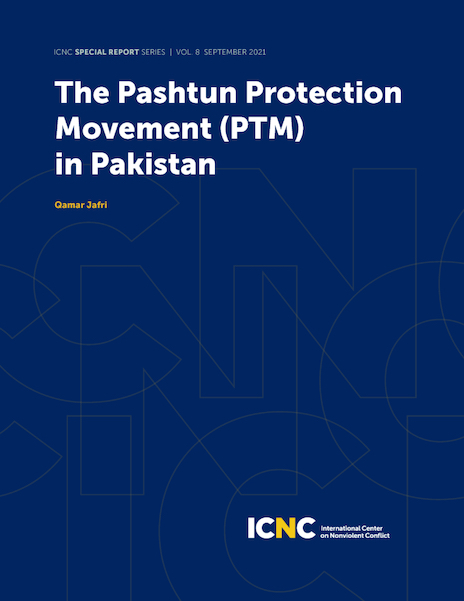
Working Tirelessly for Peace and Equality: Civil Resistance and Peacebuilding in Liberia
By Janel B. Galvanek and James Suah Shilue
Date of Publication: May 2021
Free Download
Purchase a Print Copy
Purchase e-book (Nook | Kindle)
From the establishment of the Liberian state in 1848, the Americo-Liberian settlers—descendants of freed slaves from the USA—imposed a form of indirect rule over the indigenous Liberian population that oppressed, marginalized and exploited the majority of the population. This treatment of the native population became increasingly unsustainable, and in 1980 the settler government was overthrown. A 10-year dictatorship was followed by a violent civil war that lasted until 2003. Using the framework developed by Veronique Dudouet in her 2017 ICNC Special Report, Powering to Peace: Integrating Civil Resistance and Peacebuilding Strategies, this case study examines the methodologies and approaches of the various actors involved in civil resistance and peacebuilding throughout the various phases of conflict in Liberia, from a period of latent conflict to the post-settlement phase after 2003. Many different actors in Liberia pursued strategies of peacebuilding and civil resistance simultaneously, which led to the complementarity of their work and increased the impact they had on both political and civic reform, as well as on the ultimate peace process. The case study takes an in-depth look at the impact that the strategies had on each other in their common pursuit.
By Janel B. Galvanek and James Suah Shilue
Date of Publication: May 2021
Free Download
Purchase a Print Copy
Purchase e-book (Nook | Kindle)
From the establishment of the Liberian state in 1848, the Americo-Liberian settlers—descendants of freed slaves from the USA—imposed a form of indirect rule over the indigenous Liberian population that oppressed, marginalized and exploited the majority of the population. This treatment of the native population became increasingly unsustainable, and in 1980 the settler government was overthrown. A 10-year dictatorship was followed by a violent civil war that lasted until 2003. Using the framework developed by Veronique Dudouet in her 2017 ICNC Special Report, Powering to Peace: Integrating Civil Resistance and Peacebuilding Strategies, this case study examines the methodologies and approaches of the various actors involved in civil resistance and peacebuilding throughout the various phases of conflict in Liberia, from a period of latent conflict to the post-settlement phase after 2003. Many different actors in Liberia pursued strategies of peacebuilding and civil resistance simultaneously, which led to the complementarity of their work and increased the impact they had on both political and civic reform, as well as on the ultimate peace process. The case study takes an in-depth look at the impact that the strategies had on each other in their common pursuit.
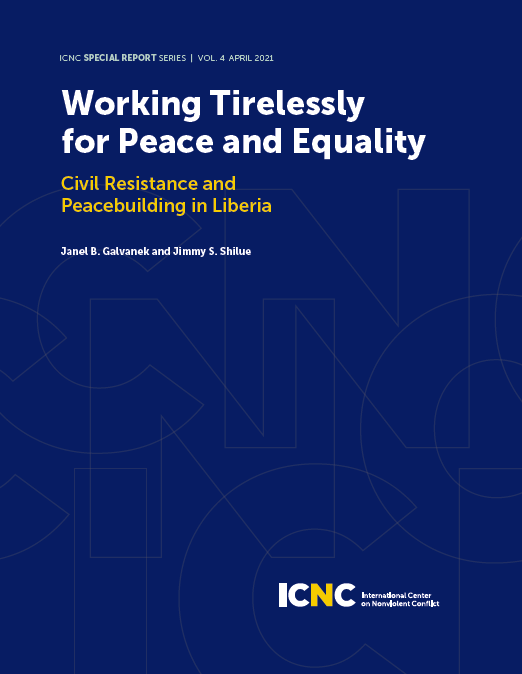
From the Hills to the Streets to the Table: Civil Resistance and Peacebuilding in Nepal
By: Ches Thurber and Subindra Bogati
Date of Publication: April 2021
Free Download
Purchase a Print Copy
Purchase e-book (Nook | Kindle)
This case study builds on Véronique Dudouet’s 2017 ICNC Special Report, Powering to Peace: Integrated Civil Resistance and Peacebuilding Strategies. Utilizing Dudouet’s framework, we trace the development of conflict in Nepal over the past thirty years, with a specific emphasis on the 2006 civil resistance campaign and subsequent peace process that led to the resolution of the country’s decade-long Maoist insurgency.
What were the drivers of social and political conflict in Nepal that led to the 2006 civil resistance campaign? How were the Maoists convinced to transition from armed insurgency to civil resistance? What accounts for the success and failures of the subsequent peace process? Leveraging the Dudouet framework, we trace the trajectory of conflict from a period of latent conflict with high levels of horizontal inequalities and structural violence to an
outbreak of overt, but initially violent conflict. We then illustrate how a transition from civil war to civil resistance was made possible and led to a successful conflict settlement. However, flaws in the conflict settlement and post-conflict phases have produced a turbulent post-settlement process, one that falls short of the goals of reconciliation, transitional justice, and sustainable peace.
By: Ches Thurber and Subindra Bogati
Date of Publication: April 2021
Free Download
Purchase a Print Copy
Purchase e-book (Nook | Kindle)
This case study builds on Véronique Dudouet’s 2017 ICNC Special Report, Powering to Peace: Integrated Civil Resistance and Peacebuilding Strategies. Utilizing Dudouet’s framework, we trace the development of conflict in Nepal over the past thirty years, with a specific emphasis on the 2006 civil resistance campaign and subsequent peace process that led to the resolution of the country’s decade-long Maoist insurgency.
What were the drivers of social and political conflict in Nepal that led to the 2006 civil resistance campaign? How were the Maoists convinced to transition from armed insurgency to civil resistance? What accounts for the success and failures of the subsequent peace process? Leveraging the Dudouet framework, we trace the trajectory of conflict from a period of latent conflict with high levels of horizontal inequalities and structural violence to an
outbreak of overt, but initially violent conflict. We then illustrate how a transition from civil war to civil resistance was made possible and led to a successful conflict settlement. However, flaws in the conflict settlement and post-conflict phases have produced a turbulent post-settlement process, one that falls short of the goals of reconciliation, transitional justice, and sustainable peace.
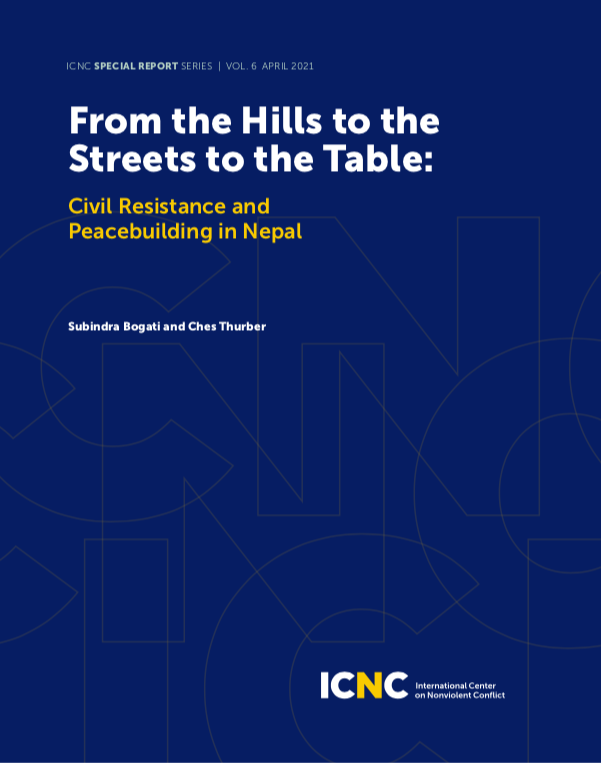
How to Win Well: Civil Resistance Breakthroughs and the Path to Democracy
By: Jonathan Pinckney
Date of Publication: April 2021
Free Download
Purchase a Print Copy
Purchase e-book (Nook | Kindle)
How do nonviolent resistance movements oust dictators? What effects do these different ways of ousting dictators have on countries’ long-term political trajectories? In this special report, I trace the pathways through which civil resistance movements of the last seventy years have removed dictatorships and the impact of these different pathways on levels of democratic progress. I find that pathways that involve campaign initiative, institutional mechanisms, and building cooperative norms – particularly negotiated transitions – tend to lead to the highest levels of democratic progress.
By: Jonathan Pinckney
Date of Publication: April 2021
Free Download
Purchase a Print Copy
Purchase e-book (Nook | Kindle)
How do nonviolent resistance movements oust dictators? What effects do these different ways of ousting dictators have on countries’ long-term political trajectories? In this special report, I trace the pathways through which civil resistance movements of the last seventy years have removed dictatorships and the impact of these different pathways on levels of democratic progress. I find that pathways that involve campaign initiative, institutional mechanisms, and building cooperative norms – particularly negotiated transitions – tend to lead to the highest levels of democratic progress.
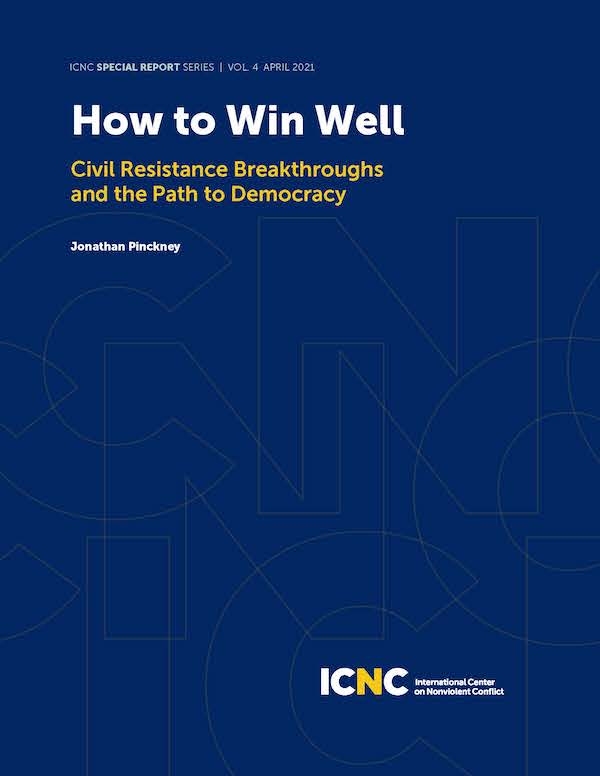
Sudan’s 2019 Revolution: The Power of Civil Resistance
By: Stephen Zunes
Date of Publication: April 2021
Free Download
Purchase a Print Copy
Purchase e-book (Nook | Kindle)
The Sudanese revolution began in December 2018 with a series of strikes, protests, and other acts of civil resistance taking place throughout the country. In February 2019, dictatorial president Omar al-Bashir declared a state of emergency and dissolved the national and regional governments, strengthening direct rule by military and intelligence officers. Massive protests resumed in early April and the military staged a coup, removing al-Bashir from power after a 30-year rule and assuming power as the Transitional Military Council. Pro-democracy activists demanded they turn over power to a civilian-led interim government with protests, along with negotiations, continued. On June 3, security forces massacred 128 people and detained and abused hundreds of detainees. Pro-democracy groups responded with a general strike and increased protests. Negotiations resumed and an agreement was signed in August formally transferring the government to civilian-led bodies.
This study interviews key activists in the movement as well as journalists and scholars who chronicled it and key civil society groups which led the struggle. This qualitative research takes place primarily in Khartoum and Omdurman, the country’s two largest cities.
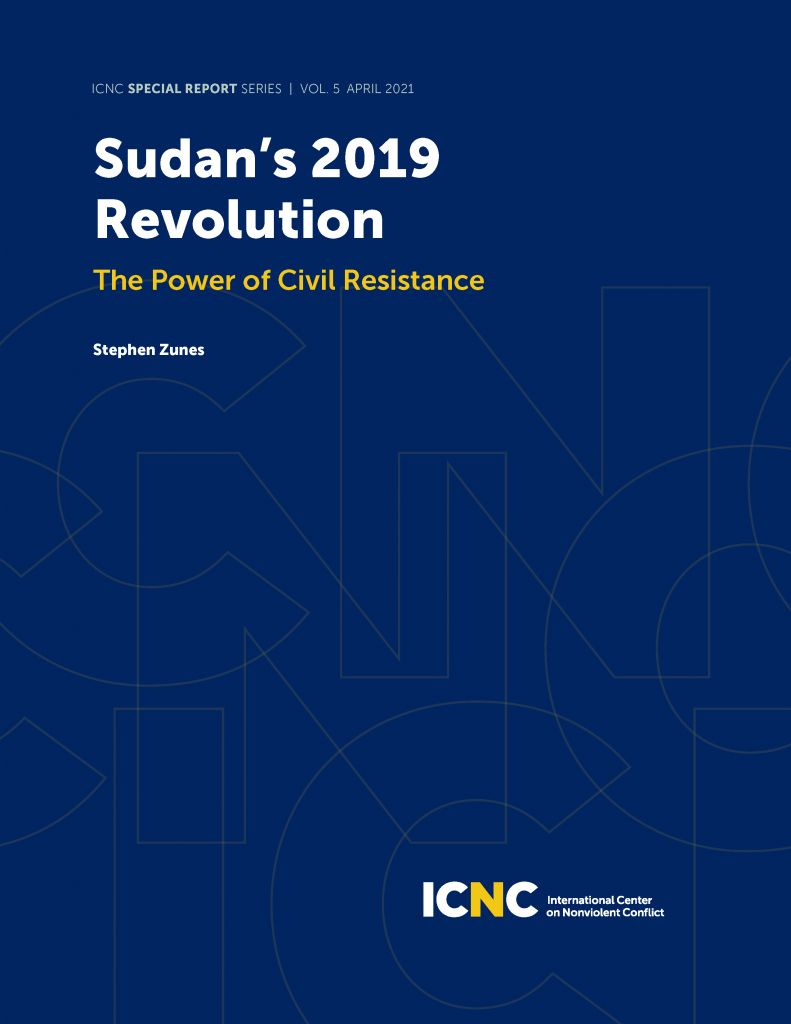
Preventing Mass Atrocities: From a Responsibility to Protect (RtoP) to a Right to Assist (RtoA) Campaigns of Civil Resistance
By: Peter Ackerman and Hardy Merriman
Date of Publication: May 2019
Free Download: English | Arabic | French | Spanish
Purchase a Print Copy
Purchase e-book (Nook | Kindle)
Events of the last decade demand new approaches to atrocity prevention that are adaptable, innovative and independent of a state-centered doctrine. With the aim of reducing risk factors such as civil war, we argue for a new normative framework called The Right to Assist (RtoA), which could strengthen international coordination and support for nonviolent civil resistance campaigns demanding rights, freedom and justice against non-democratic rule.
RtoA would: 1) engage a wide range of stakeholders such as NGOs, states, multilateral institutions and others; 2) bolster various factors of resilience against state fragility; and 3) incentivize opposition groups to sustain commitment to nonviolent strategies of change. The adoption of this doctrine can reduce the probability of violent conflict that significantly heightens atrocity risk, while increasing the prospects for constructive human development.
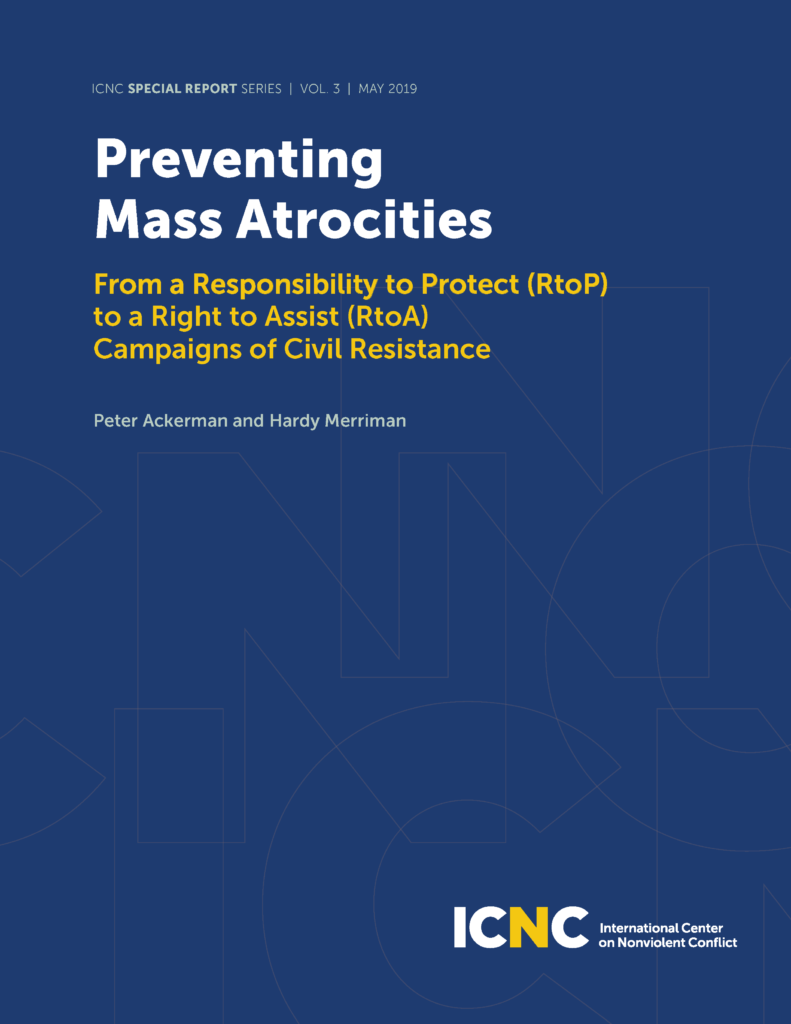
Nonviolent Resistance and Prevention of Mass Killings During Popular Uprisings
By: Dr. Evan Perkoski and Dr. Erica Chenoweth
Date of publication: April 2018
Series Editor: Maciej Bartkowski
Volume Editor: Amber French
Free Download
Purchase a Print Copy
Purchase e-book (Nook | Kindle)
What drives governments to crack down on and kill their own civilians? And how—and to what extent—has nonviolent resistance historically mitigated the likelihood of mass killings? This special report explores the factors associated with mass killings: when governments intentionally kill 1,000 or more civilian noncombatants. We find that these events are surprisingly common, occurring in just under half of all maximalist popular uprisings against states, yet they are strongly associated with certain types of resistance. Nonviolent uprisings that do not receive foreign material aid and that manage to gain military defections tend to be the safest. These findings shed light on how both dissidents and their foreign allies can work together to reduce the likelihood of violent confrontations.
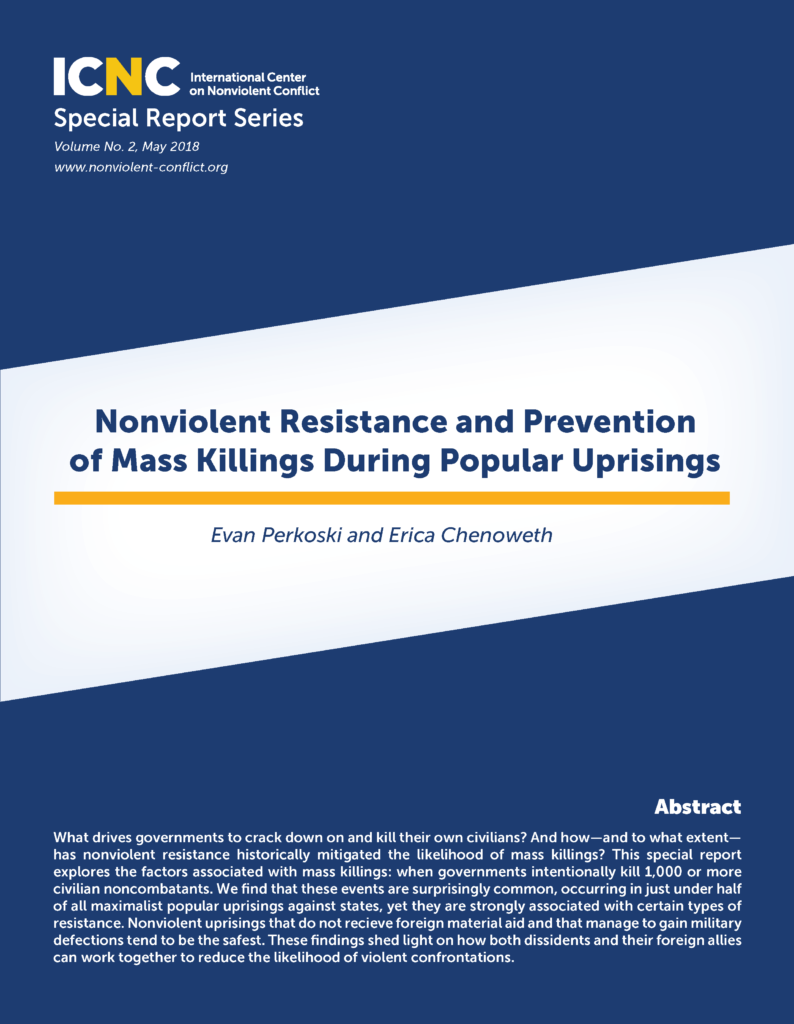
Powering to Peace: Integrated Civil Resistance and Peacebuilding Strategies
By: Véronique Dudouet
Date of publication: April 2017
Series Editor: Maciej Bartkowski
Volume Editor: Amber French
Free Download English | French
Purchase copies: English | French
Purchase e-book (Nook | Kindle)
This report explores the complementary ideas and practices that civil resistance and peacebuilding approaches present, each from different points along the conflict transformation spectrum. Both strategies oppose violence in all its forms, and seek to pursue just peace by peaceful means. However, they take different approaches to conflict transformation, both in their analyses of the primary causes of violence and how they respond to conflict. The report then describes how civil resistance and peacebuilding can work in tandem throughout the four stages of transformation of asymmetric conflicts. Concrete examples are provided to illustrate the respective functions of constructive conflict (through civil resistance) and conflict mitigation (through peacebuilding) in transitions from latent to overt conflict, from resistance to dialogue and negotiation, and from conflict settlement to sustainable peace.
